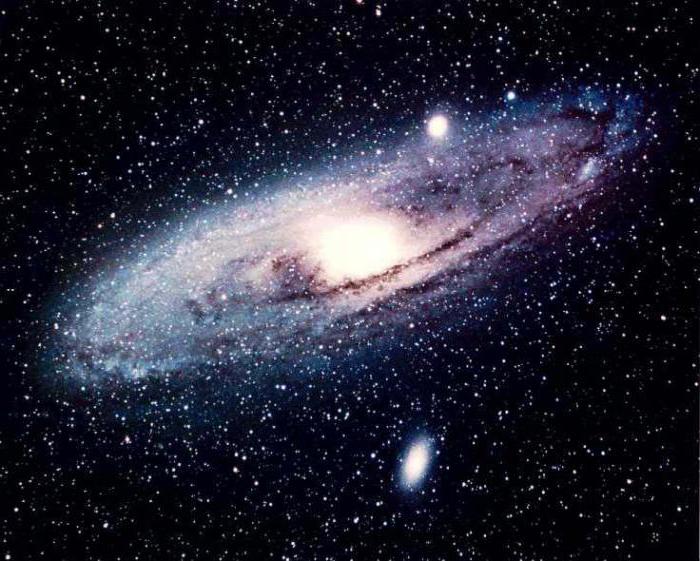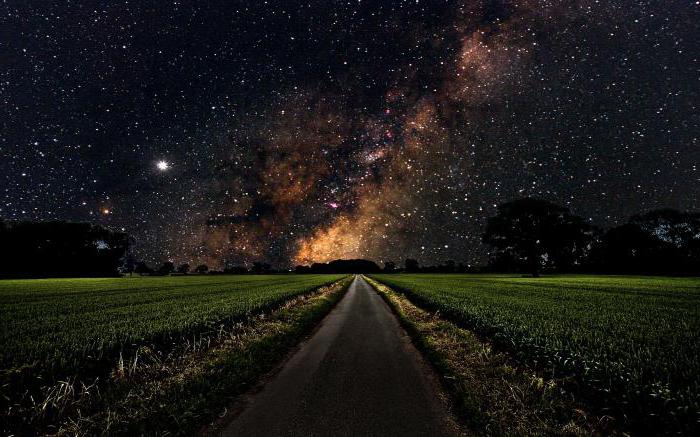Constellations and bright stars. Constellation names
A beginner who begins to study the starry sky is first of all surprised by the names of the constellations. As a rule, even a person with a rich imagination cannot discern in the arrangement of stars what the name of the constellation suggests. Big Dipper, for example (at least the main part of that constellation), rather resembles a ladle, but randomly
Scattered nearby are groups of faint stars called the constellations Giraffe and. Lynxes are not at all like a giraffe or a lynx. No less strange is the variety of names. The constellations Bootes (or Shepherd) and Sextant, Hydra and Fly, Microscope and Lizard easily coexist in the sky! What causes this completely chaotic set of names at first glance?
The starry sky reflected different eras and creativity different nations. Modern generally accepted, so to speak, official, star maps with their 88 constellations have completed
centuries-old attempts to immortalize objects in the sky that do not always deserve it. There is a lot in the history of constellations that is arbitrary and sometimes simply ridiculous. Often not so
just find out for what reasons this or that constellation appeared in the sky, and even to this day in some cases it remains controversial what the names of individual constellations mean,
Even the final, final list of 88 constellations was compiled not so much according to some logical principle, but rather from the desire to preserve, finally, unchanged the existing
by this time a picture of the sky. Ursa Major, Orion, Taurus, Canis Major, Minor
Dog, Bootes, Ursa Minor, Dragon, Hercules, Aquarius, Capricorn, Sagittarius, Arrow, Dolphin, Hare, Eri Dan, Whale, Southern Fish, Small Horse, Centaurus, Wolf, Hydra, Chalice, Raven, Libra,
Hair of Veronica, Southern Cross, Northern Crown, Ophiuchus, Scorpio,. Virgo, Gemini, Cancer, Leo, Auriga, Cepheus, Cassiopeia, Andromeda, Pegasus, Aries, Triangle, Pisces, Perseus,
Lyre, Swan, Eagle. Most of these 46 constellations are of mythological origin - they depict characters ancient greek myths and legends. Another group of constellations was first mentioned by the astronomer Jean Bayer, who published a beautifully designed atlas of the starry sky in 1603. It includes Peacock, Toucan, Crane, Phoenix, Flying Fish, Southern Hydra, Golden Fish, Chameleon, Bird of Paradise, Southern Triangle, Indian.
TO end of XVII V. In the list of constellations compiled by the famous Gdańsk astronomer Hevelius, one can find a number of new constellations that have appeared over the course of the century. These are the Giraffe, the Fly, the Unicorn, the Dove, the Hounds, the Fox, the Lizard, the Sextant, the Lesser Lion, the Lynx, the Shield, and the Southern Crown. In 1752, the famous explorer of the southern starry sky, French astronomer Lacaille, added 14 more constellations to the list. Here they are: Sculptor, Kiln, Clock, Grid, Chisel,
Painter, Altar, Compass, Pump, Octant, Compass, Telescope, Microscope, Table Mountain. All these constellations are located in the southern hemisphere of the starry sky. We have left
add only five constellations to the list. Three of them - Keel, Stern and Sails - in ancient times constituted main part constellation of the Ship - that same mythical ship on
which, if you believe ancient Greek legends, the Argonaut heroes traveled to Colchis. The fourth constellation, Snake, is remarkable in that on star charts it underestimates two
separate areas of the sky. You might even think that there are two constellations of Serpens close to each other in the sky. In fact, this is one constellation, separated by the constellation Ophiuchus. Ancient star maps depict a man holding a snake.
The last, 88th constellation. The triangle is located in the southern starry sky, and its origin is as arbitrary as that of the Southern Triangle. From this brief listing of the constellations, we can conclude that the names of the most ancient of them owe their origin to various ancient myths.
Constellations.A constellation in astronomy is simply an area of the sky within some fixed boundaries...
Each cultural people had their own constellations, which differed greatly both in number and in name or position on the celestial sphere. We will not go into details, since more than one book could be written on this topic... In general, the situation required order, and it was established. The final list of 88 modern constellations and their boundaries was approved at a meeting of the International Astronomical Congress in 1922.
The table shows the Russian and Latin names of the constellations, their generally accepted three-letter abbreviations, and in the last column the spelling of the constellation in the genitive case. Knowing this is important, since it is correct to say not only " Alpha Andromeda" or " Beta Gemini", but also Alpha Andromedae And Beta Geminorum...
(according to Russian spelling). 01. Andromeda And Andromeda Andromedae 02. Gemini Gem Gemini Geminorum 03. Ursa Major UMa Ursae Major Ursae Majoris 04. Canis Major CMa Canis Major Canis Majoris 05. Libra Lib Libra Librae 06. Aquarius Aqr Aquarius Aquarii 07. Charioteer Aur Auriga Aurigae 08. Wolf Lup Lupus Lupi 09. Bootes Boo Bootes Bootis 10. Veronica's Hair Com Coma Berenices Comae Berenices 11. Raven Crv Corvus Corvi 12. Hercules Her Hercules Herculis 13. Hydra Hya Hydra Hydrae 14. Dove Col Columba Columbae 15. Hounds Dogs CVn Canes Venatici Canum Venaticorum 16. Virgo Virgo Virginis 17. Dolphin Del Delphinus Delphini 18. Dragon Dra Draco Draconis 19. Unicorn Mon Monoceros Monocerotis 20. Altar Ara Ara Arae 21. Painter Pic Pictor Pictoris 22. Giraffe Cam Camelopardalis Camelopardalis 23. Crane Gru G rus Gruis 24. Hare Lep Lepus Leporis 25. Ophiuchus Ophiuchus Ophiuchi 26. Snake Ser Serpens Serpentis 27. Golden Fish Dor Dorado Doradus 28. Indian Ind Indus Indi 29. Cassiopeia Cas Cassiopeja Cassiopeiae 30. Keel Car Carina Carinae 31. Whale Cet Cetus Ceti 32 . Capricornus Capricorni 33. Capspace pyx pyxis pyxidis 34. Feed PUP PUPPIS PUPPIPIS 35. Swan CYG CYGNUS CYGNI 36. Leo LEO Leo VOLANS VOLANTS 38. Lyrae 39. Fox Vulpecula Vulpeculae 40. Ursa Minor UMi Ursa Minor Ursae Minoris 41. Lesser Horse Equ Equuleus Equulei 42. Lesser Lion LMi Leo Minor Leonis Minoris 43. Lesser Canis CMi Canis Minor Canis Minoris 44. Microscope Mic Microscopium Microscopii 45. Fly Mus Musca Muscae 46. Pump Ant Antlia Antliae 47. Square Nor Norma Normae 48. Aries Ari Aries Arietis 49. Octant Oct Octans Octantis 50. Eagle Aql Aquila Aquilae 51. Orion Ori Orion Orionis 52. Peacock Pav Pavo Pavonis 53. Sails Vel Vela Velorum 54. Pegasus Peg Pegasus Pegasi 55. Perseus Per Perseus Persei 56. Furnace For Fornax Fornacis 57. Bird of Paradise Aps Apus Apodis 58. Cancer Cnc Cancer Cancri 59. Incisor Cae Caelum Caeli 60. Pisces Psc Pisces Piscium 61. Lynx Lyn Lynx Lyncis 62. Northern Crown CrB Corona Borealis Coronae Borealis 63. Sextant Sex Sextans Sextantis 64. Reticularis Ret Reticulum Reticuli 65. Scorpio Sco Scorpius Scorpii 66. Sculptor Scl Sculptor Sculptoris 67. Table Mountain Men Mensa Mensae 68. Arrow Sge Sagitta Sagittae 69. Sagittarius Sgr Sagittarius Sagittarii 70. Telescope Tel Telescopium Teles copii 71 . Taurus Tau Taurus Tauri 72. Triangle Tri Triangulum Trianguli 73. Toucan Tuc Tucana Tucanae 74. Phoenix Phe Phoenix Phoenicis 75. Chameleon Cha Chamaeleon Chamaeleontis 76. Centaurus Cen Centaures Centauri 77. Cepheus Cep Cepheus Cephei 78. Compasses Cir Circinus Circini 79. Clock Hor Horologium Horologii 80. Bowl Crt Crater Crateris 81. Shield Sct Scutum Scuti 82. Eridanus Eri Eridanus Eridani 83. Southern Hydra Hyi Hydrus Hydri 84. Southern Crown CrA Corona Australis Coronae Australis 85. Southern Fish PsA Piscis Austrinus Piscis Austrini 86. Southern Cross Cru Crux Crucis 87. Southern Triangle TrA Triangulum Australe Trianguli Australis 8 8 Lizard Lac Lacerta Lacertae Today you can find almost everything online, but for an initial introduction, I recommend starting here.
Working together ennobles. And finally - Constellations from "Viki"- I recommend!
For the more advanced: One of the most useful star catalogs for beginners in studying stars, their names and constellations is the "Bright Star Catalog", containing the most complete information about 9110 stars visible to the naked eye (up to 6.5 magnitude). I advise you to use one of the web pages, to immediately gain access to information about the brightest stars by constellation Well... the fact that I linked for a long time... Constellations and their stars- This site contains pages for all 88 constellations, which contain the names of bright stars and links to objects in the Messier catalog. Constellations- a good site from the American Association of Astronomy Amateurs. By the way, you can get acquainted with the activities of the association itself... Do you need star maps? Especially for you, I have prepared one of the options moving star map. These are pdf files that you can print on a good laser printer and use when planning your own observations and solving a number of practical problems. Here you can take it
On a clear night it always seems to us that everything celestial bodies equally distant from us, as if they were located on inner surface some sphere in the center of which is the eye of the observer. The apparent celestial sphere is actually an illusion, and the reason for this illusion is the inability of the human eye to distinguish between the vast actual distances of various celestial bodies.
For thousands of years, the prevailing view was that the celestial sphere actually existed and was the boundary within which the Universe extended. But in 1837-1839, when the annual years of some stars were first measured, it was proven that the stars are at enormous distances from us, and the celestial sphere is essentially the result of an optical illusion, since these distances are different. Nevertheless, the concept of the celestial sphere has been preserved in astronomy, since it is convenient to use when determining the positions of celestial bodies (using spherical coordinates).
On the visible celestial sphere, projections of stars and celestial bodies are actually visible, that is, those points at which visual rays pierce the sphere.
Due to the fact that the projections of any two stars are located close to each other on the celestial sphere, it seems to us that the stars are close to each other, whereas in space they can be separated by colossal distances. Both stars and other celestial bodies, located in space at enormous distances from each other and having nothing in common with each other, on the celestial sphere may appear to be located very close. In this regard, the exceptions are physical stars, multiple stars, star clusters, stellar associations, etc. Individual stars in these formations are not only apparently close, but the actual distances between them are not so great (on an astronomical scale).
Turning our gaze to the starry sky, we see countless stars randomly scattered in space. In reality, only about 6 thousand stars on the celestial sphere can be seen with the naked eye, and from any point on the earth's surface at any given moment - only half of them. With longer regular observations, you can notice that the figures formed more bright stars , remain “unchanged” and that in general the appearance of the starry sky “does not change” over time. It is possible that the "constancy" of the figures that the stars form on the celestial sphere is first discovery , made by a person at the dawn of his conscious life. (In reality, the appearance of the starry sky changes over a period of about 25,800 years. Due to the stars’ own movement, the contours of the constellations also change. But these changes occur so slowly that they become perceptible only after thousands of years and cannot be noted within one human life
, if you do not use astronomical observation methods.) Even several thousand years before our era, those areas of the starry sky where more bright stars form characteristic figures and were delimited into separate constellations. First of all, apparently, the constellations were demarcated, which with their bright stars and formed configurations most strongly attracted attention. People were also impressed by the appearance of the same constellations in the starry sky in spring, summer, autumn and winter. The appearance of some of these constellations was associated (in time) with economic activity
According to information that has reached us, the distinction zodiac constellations and most of the constellations of the northern celestial hemisphere occurred in Egypt around 2500 BC. e. But we do not know the Egyptian names of the constellations. The ancient Greeks adopted the Egyptian delimitation of the constellations, but gave them new names. Nobody can say when this happened. Note that when describing the famous shield of Achilles in the Iliad, Homer calls the constellations depicted on the shield by the god Hephaestus Ursa Major, Bootes, Orion, clusters of stars in the constellation Taurus - the Pleiades, Hyades, just as they are called now.
The International Astronomical Union (MAC) has decided that the number of constellations in the entire celestial sphere is 88, of which 47 were named approximately 4,500 years ago. Most of the names are taken from Greek mythology.
Total number There are 83 constellations indicated so far. The remaining five constellations are Carina, Puppis, Sails, Serpens and Angle. Previously, three of them - Keel, Stern and Sails - formed one large constellation Ship, in which the ancient Greeks personified the mythical ship of the Argonauts, under the leadership of Jason, who undertook a campaign to distant Colchis for the Golden Fleece.
The constellation Serpens is the only one located in two separate areas of the sky. In essence, it is divided into two parts by the constellation Ophiuchus, and thus an interesting combination of two constellations is obtained. In ancient star atlases, these constellations were depicted in the form of a man (Ophiuchus) holding a huge snake in his hands.
For the first time, Bayer introduced the designation of stars in Greek letters in his star atlas. The brightest star in any constellation was designated by the letter ‘ a’ (alpha), following it in decreasing brightness - the letter ‘ b’ (beta), hereinafter - with the letter ‘ y’ (gamma), etc. Only in a few constellations do these designations do not correspond to the decrease in the brightness of the stars.
About 300 of the brightest stars have and proper names, most of which were given by the Arabs. Interestingly, the Arabs gave names to the star depending on its position in the allegorical or mythological depiction of the constellation. a For example, a Taurus received the name Aldebaran ("Eye of the Taurus"), b Orion is called Betelgeuse ("Giant's Shoulder")
Some churchmen made repeated attempts to replace the "unholy pagan" names of the constellations Christian names. It was proposed, for example, to call the constellation Aries the Apostle Peter, Perseus - Saint Paul, Andromeda - the Holy Sepulcher, Cassiopeia - Mary Magdalene, Cepheus - King Solomon, Pisces - the Apostle Matthew, etc. These proposals were unanimously rejected by astronomers.
As a result of increased international cooperation in the field of astronomy, it became necessary to more accurately determine the boundaries of constellations, because in different atlases the same stars were assigned to different constellations. Back in 1801, Bode outlined the boundaries of the constellations, assigning the fainter stars of the “emptiness”, which had not previously been included in any of the constellations, to one or another neighboring constellation. Thanks to this, no “voids” were left, and at the same time the boundaries of the constellations on the celestial sphere were determined. The fact that the boundaries between the constellations represented broken lines, forced the International Astronomical Union to specifically consider this issue at a congress in 1922. It was decided to exclude 27 constellations with inappropriate names in order to preserve the names of the ancient constellations and the constellations added by Bayer, Hevelius and Lacaille, drawing the boundaries of the constellations along celestial parallels and.
It was recommended that the new constellation boundaries should, as far as possible, follow the old ones and not deviate significantly from them.
At the same time, the International Astronomical Union expanded the concept of “constellation”. Nowadays, a constellation is understood not as a configuration created by brighter stars, but as one of 88 sections of the celestial sphere, within which there are figures formed by the brightest stars characteristic of this constellation. Consequently, one constellation, in addition to stars that are bright and generally visible to the naked eye, also includes all space objects that can be observed by all observational means. That is why for variable stars, after their designation, the constellation in which they are located is always indicated. This rule applies to new and flares up within about ten days. Then its shine begins to slowly decrease. At its maximum brightness, it shines like several billion stars similar to the Sun! In addition to the expanding shell of gas thrown off during the outburst, a rapidly rotating shell also remains in place of the supernova. neutron star, or pulsar.")">supernovae - the constellation in which they can be observed is always indicated. For each comet it is necessary to indicate in which constellation it is located.
this moment
to make it easier to detect and observe.
Meteor showers are usually identified by the constellation in which they are located. Even for more visible galaxies, the constellation in which they are located is indicated. For example, the closest galaxy known to us is in the constellation Andromeda. All this requires a good knowledge of the constellations.
They are indispensable reference points for anyone interested in astronomical phenomena and problems of astronomy.
Constellations are guides that have accompanied man since ancient times. People could use them to navigate their way. Once upon a time, constellations were those figures that formed stars among themselves. Now this is what certain territories of the celestial sphere are called. In 1930, the official number of constellations was fixed - 88. Of this number, 47 were discovered and described before our era. But the names they were given then are still used today.
For ancient astronomers, a group of stars united by one name served to make it easier to find less bright luminaries. Bright stars united in certain groups. Usually they received the names of certain animals. For example, Scorpio, Dog. Also a group of stars united common name, could have received a name in honor of one of the heroes of ancient myths - for example, the constellations Perseus, Andromeda and others were named that way. WITH early XVIII centuries, the brightest stars of some constellations began to be named by letters Greek alphabet. In addition, about 130 more individual bright stars received their names. And for luminaries of lower brightness, researchers still use letter designations to this day.

Observing the constellations
The surrounding world, stars and constellations will be especially interesting to the attentive observer. If you observe the night sky for several hours, you can see how the entire celestial sphere, including the luminaries, moves smoothly, as if rotating around an invisible axis. This type of movement is called diurnal. The luminaries in the firmament move from left to right. The stars, like the Moon and the Sun, rise in the east. His maximum height they reach in the southern part. Sunset comes from the west.
The largest constellation in the sky
The largest group of stars united by one name is It, located in the southern hemisphere. The name of this constellation is translated from Latin language means "water snake". Hydra was discovered by the ancient Greek scientist Ptolemy in the 2nd century BC. e. Exists famous myth, according to which the constellation Hydra is identified with the snake brought to the god Apollo by the raven: the constellation Raven is also located next to Hydra. According to myth, Apollo sent the Raven to fetch water. The raven brought the water snake as an apology for returning too late. Ancient Greek god was very angry and in a rage threw the bird, cup and snake into the sky, where they turned into the constellations - Raven, Crater and Hydra.

Another majestic group of stars united by one name is the constellation Orion. It is believed that it is no less beautiful than the constellation Ursa Major. In the night sky it is very easy to detect by the so-called “Orion’s belt” - three located slightly at an angle in one row. If you draw an imaginary line through the "Orion's belt", then its lower end will point to the brightest luminary of the night sky - the star Sirius. Around these three stars are brighter stars, as well as the cosmic Orion Nebula. It can be easily seen even with binoculars. Orion's brightest star is Betelgeuse, whose name means "armpit" in Arabic.
Zodiac Constellations
The universality of the names of the stars and constellations around which the Sun makes its visible annual path is called the Zodiac. There are thirteen such constellations in total, but researchers use twelve of them according to the number of months in the year. The division of the sky into 12 spheres appeared in ancient Babylon in the 5th century BC. e. Many people associate the Zodiac primarily with astrology. But in fact, the signs of the Zodiac belong to the realm of astronomy. These constellations lie on the ecliptic line, along which the Sun makes visible travel 365 days a year. It lingers near each constellation for approximately the time we call a month.

Pleiades constellation
For everyone, the answer to the question “What is the name of a group of stars united by one name?” Astronomers group celestial bodies into groups called constellations. But scientists sometimes make serious mistakes in estimating the size of these star clusters. An example of this is the idea of the Pleiades constellation. It was once believed that there were only 7 stars in this group. The ancient Slavs called them differently: “Seven Sisters”, “Stozhars” and so on.
But at present, both foreign and domestic astronomers know that there are not seven Pleiades in the sky. This cluster contains thousands of stars, of which to the human eye only fourteen are available. They originated from the same molecular cloud. These stars are close to each other in composition and age. Scientists believe that the Pleiades cluster is about 115 million years old. This constellation can be easily observed in the latitudes of Russia, Ukraine and Belarus. The Pleiades are near solar system. Flying to this constellation is 410 light years.

The bright constellation Centaurus
And the closest to the solar system is the constellation Centaurus. It is in it that humanity hopes to find fellow humans. This cluster consists of only three stars: Centauri A, Centauri B and Alpha Centauri are 2 billion years older than the Solar System. The light that these stars emit takes 4.3 years to reach an observer on Earth. This is where the closest star to the Sun is located - Proxima Centauri. However, after 9 thousand years this place will be taken by Barnard, belonging to the constellation Ophiuchus. The constellation Centaurus was also discovered by Ptolemy. It was named after a centaur - half-horse, half-man. The constellation Centaurus is very bright and is one of the largest in the sky.




